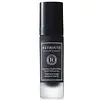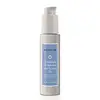What's inside
What's inside
 Key Ingredients
Key Ingredients

 Benefits
Benefits

 Concerns
Concerns

No concerns
 Ingredients Side-by-side
Ingredients Side-by-side

Water
Skin ConditioningTetrahexyldecyl Ascorbate
AntioxidantGlycerin
HumectantPunica Granatum Extract
AstringentSqualane
EmollientTocopheryl Acetate
AntioxidantCamellia Sinensis Leaf Extract
AntimicrobialPanthenol
Skin ConditioningNiacinamide
SmoothingVernonia Appendiculata Leaf Extract
Skin ProtectingAllantoin
Skin Conditioning7-Dehydrocholesterol
Emulsion StabilisingUbiquinone
AntioxidantAmmonium Acryloyldimethyltaurate/Beheneth-25 Methacrylate Crosspolymer
Emulsion StabilisingPolyacrylate Crosspolymer-6
Emulsion StabilisingPolyquaternium-55
Sucrose Laurate
EmollientPhenoxyethanol
PreservativeEthylhexylglycerin
Skin ConditioningPlantago Lanceolata Leaf Extract
AntimicrobialXanthan Gum
EmulsifyingC12-15 Alkyl Benzoate
AntimicrobialTribehenin
EmollientCeramide Ng
Skin ConditioningPEG-10 Phytosterol
EmulsifyingPalmitoyl Hexapeptide-12
Skin ConditioningSimmondsia Chinensis Seed Oil
EmollientPadina Pavonica Thallus Extract
Skin ConditioningHelianthus Annuus Seed Oil
EmollientTriticum Vulgare Germ Extract
Skin ConditioningHelianthus Annuus Seed Extract
Skin ConditioningEquisetum Arvense Extract
AstringentCommiphora Myrrha Resin Extract
Skin ConditioningRetinyl Palmitate
Skin ConditioningWater, Tetrahexyldecyl Ascorbate, Glycerin, Punica Granatum Extract, Squalane, Tocopheryl Acetate, Camellia Sinensis Leaf Extract, Panthenol, Niacinamide, Vernonia Appendiculata Leaf Extract, Allantoin, 7-Dehydrocholesterol, Ubiquinone, Ammonium Acryloyldimethyltaurate/Beheneth-25 Methacrylate Crosspolymer, Polyacrylate Crosspolymer-6, Polyquaternium-55, Sucrose Laurate, Phenoxyethanol, Ethylhexylglycerin, Plantago Lanceolata Leaf Extract, Xanthan Gum, C12-15 Alkyl Benzoate, Tribehenin, Ceramide Ng, PEG-10 Phytosterol, Palmitoyl Hexapeptide-12, Simmondsia Chinensis Seed Oil, Padina Pavonica Thallus Extract, Helianthus Annuus Seed Oil, Triticum Vulgare Germ Extract, Helianthus Annuus Seed Extract, Equisetum Arvense Extract, Commiphora Myrrha Resin Extract, Retinyl Palmitate
Water
Skin ConditioningGlycerin
HumectantPropanediol
SolventHydrolyzed Hyaluronic Acid
HumectantSodium Hyaluronate
HumectantApricot Kernel Oil Polyglyceryl-6 Esters
EmollientPolyglyceryl-6 Oleate
EmulsifyingCaprylyl Glycol
EmollientPolyglyceryl-10 Oleate
Skin ConditioningAcrylates/C10-30 Alkyl Acrylate Crosspolymer
Emulsion StabilisingMagnolol
AntioxidantKaempferol
AntioxidantTetrahexyldecyl Ascorbate
AntioxidantGlycolipids
Skin ConditioningGlycine Soja Sterols
EmollientTocopheryl Acetate
AntioxidantPhenoxyethanol
PreservativeSorbitan Palmate
EmollientPotassium Sorbate
PreservativeSodium Hydroxide
BufferingGlyceryl Polyacrylate
Xanthan Gum
EmulsifyingHexylene Glycol
EmulsifyingWater, Glycerin, Propanediol, Hydrolyzed Hyaluronic Acid, Sodium Hyaluronate, Apricot Kernel Oil Polyglyceryl-6 Esters, Polyglyceryl-6 Oleate, Caprylyl Glycol, Polyglyceryl-10 Oleate, Acrylates/C10-30 Alkyl Acrylate Crosspolymer, Magnolol, Kaempferol, Tetrahexyldecyl Ascorbate, Glycolipids, Glycine Soja Sterols, Tocopheryl Acetate, Phenoxyethanol, Sorbitan Palmate, Potassium Sorbate, Sodium Hydroxide, Glyceryl Polyacrylate, Xanthan Gum, Hexylene Glycol
 Reviews
Reviews

Ingredients Explained
These ingredients are found in both products.
Ingredients higher up in an ingredient list are typically present in a larger amount.
Glycerin is already naturally found in your skin. It helps moisturize and protect your skin.
A study from 2016 found glycerin to be more effective as a humectant than AHAs and hyaluronic acid.
As a humectant, it helps the skin stay hydrated by pulling moisture to your skin. The low molecular weight of glycerin allows it to pull moisture into the deeper layers of your skin.
Hydrated skin improves your skin barrier; Your skin barrier helps protect against irritants and bacteria.
Glycerin has also been found to have antimicrobial and antiviral properties. Due to these properties, glycerin is often used in wound and burn treatments.
In cosmetics, glycerin is usually derived from plants such as soybean or palm. However, it can also be sourced from animals, such as tallow or animal fat.
This ingredient is organic, colorless, odorless, and non-toxic.
Glycerin is the name for this ingredient in American English. British English uses Glycerol/Glycerine.
Learn more about GlycerinPhenoxyethanol is a preservative that has germicide, antimicrobial, and aromatic properties. Studies show that phenoxyethanol can prevent microbial growth. By itself, it has a scent that is similar to that of a rose.
It's often used in formulations along with Caprylyl Glycol to preserve the shelf life of products.
Tetrahexyldecyl Ascorbate (THD) is a stable and oil-soluble form of Vitamin C.
THD is special in that it has the ability to travel deeper into skin than traditional ascorbic acid while maintaining the same skin benefits (double win!).
Because it’s oil-soluble, THD dives deep into your skin’s fatty layers (think ceramides and cholesterol) to fight off the kind of free radicals that mess with your skin barrier. This makes it a great pair with water-based vitamin C (ascorbic acid) that mainly works on the surface.
Even at just 0.1%, THD is already showing great antioxidant activity. When used up to 2%, it helps keep your skin happy and calm, especially when it’s stressed from pollution or sun.
Want to fade dark spots or tackle hyperpigmentation? You’ll want 5% or more. Pairing it with brightening buddies like niacinamide or licorice root gives even better results. One study even used 30% THD with other brighteners and saw real results on stubborn discoloration, even in melasma-prone skin.
A note on THD: It’s has a slightly silky, oily texture and usually shows up colorless or pale yellow (though the exact shade can vary by supplier).
While you can sneak it into water-based formulas, it really shines when paired with silicones or oils, which help your skin soak it up better.
THD is pretty stable, but it’s still vulnerable to degradation like ascorbic acid. Too much light or heat (above 113°F / 45°C) can break it down over time. Go for dark and opaque packaging that keeps it safe and shady!
Read more about other types of Vitamin C:
Learn more about Tetrahexyldecyl AscorbateTocopheryl Acetate is AKA Vitamin E. It is an antioxidant and protects your skin from free radicals. Free radicals damage the skin by breaking down collagen.
One study found using Tocopheryl Acetate with Vitamin C decreased the number of sunburned cells.
Tocopheryl Acetate is commonly found in both skincare and dietary supplements.
Learn more about Tocopheryl AcetateWater. It's the most common cosmetic ingredient of all. You'll usually see it at the top of ingredient lists, meaning that it makes up the largest part of the product.
So why is it so popular? Water most often acts as a solvent - this means that it helps dissolve other ingredients into the formulation.
You'll also recognize water as that liquid we all need to stay alive. If you see this, drink a glass of water. Stay hydrated!
Learn more about WaterXanthan gum is used as a stabilizer and thickener within cosmetic products. It helps give products a sticky, thick feeling - preventing them from being too runny.
On the technical side of things, xanthan gum is a polysaccharide - a combination consisting of multiple sugar molecules bonded together.
Xanthan gum is a pretty common and great ingredient. It is a natural, non-toxic, non-irritating ingredient that is also commonly used in food products.
Learn more about Xanthan Gum